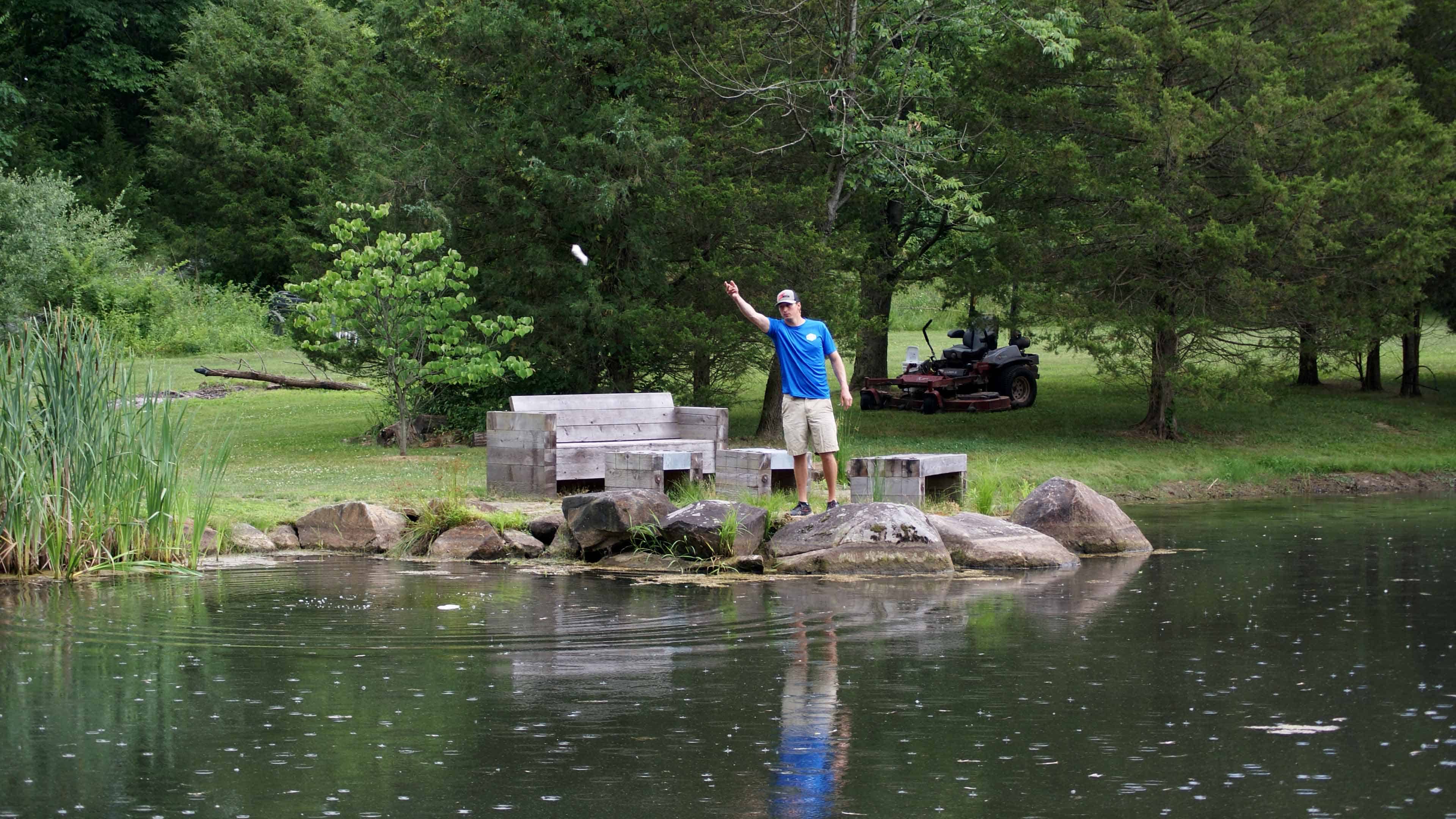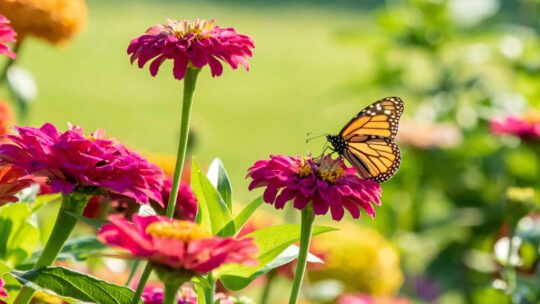
In this Backyard Life article, contributor and pro fisherman Grae Buck shares tips on how to manage a pond. A backyard pond can add aesthetic beauty and recreational opportunities to your property. Particularly, if it’s managed properly. Proper management is essential to keep your pond looking and functioning at its best, but hinges on several factors. These include water depth and clarity, vegetation, fish species and personal goals. Here are a few of Grae’s top practices that’ll help improve your pond’s water quality and aesthetic appeal.
How to Manage Nutrients in a Pond
To start, it’s important to reduce the amount of nutrients entering your pond in order to slow algae and vegetation growth. Nutrients—such as fertilizer or agricultural runoff, pet or livestock manure etc.—can cause excessive algae and/or vegetation growth. This can not only diminish the pond’s aesthetic appearance, but also reduce the dissolved oxygen levels and harm fish populations. When the latter occurs, it’s referred to as “eutrophic” conditions. To keep this from happening, create a fertilizer set-back—50-feet from the pond, for instance—to prevent runoff to the pond during rain events. Another way to minimize nutrient runoff to waterways is to allow a buffer to grow around your pond. A vegetated area that’s allowed to grow taller will help to filter out pollutants before they enter your pond.
Match Fish Food to Fish Species
Select a fish food based on the species of fish—catfish, bluegills, largemouth bass—in your pond, and that’s correct for their life stage (fingerling or adult) and size, and meets your goals for how fast you want them to grow. A great product to accomplish this is Purina® AquaMax Sport Fish MVP. It meets the needs of fast-growing fish, but with nine particle sizes that float and sink to allow the smaller, less aggressive fish feeding near the bottom to enjoy the same nutrition as the larger, more aggressive fish feeding at the surface.
Manage Fish Consumption
If you use an automated fish feeder, only feed the recommended amount for fish consumption. Overfeeding can lead to algae blooms, excessive vegetation and eutrophic conditions, as previously mentioned.
Watch for Overgrowth
Be sure to address excessive algae and vegetative growth before it gets out of control. Consider natural treatments that are available as alternatives to herbicides. The combination of a pond dye and biological bacteria are often successful to limit algae and vegetative growth by reducing sunlight penetration (photosynthesis) and help uptake the nutrients. AquaSplash Blue or Black are other biodegradable products that are safe for fish, birds and vegetation. Using concentrated beneficial bacteria (such as MicroLife Clear) helps uptake excess nutrients, which, in turn, improves water clarity and reduces silt and pond odors to create a more habitable environment for fish and aquatic life.
Aeration
Aeration is another important management strategy for improving overall water quality.. Proper aeration mixes the water column evenly by destratifying a pond, ensuring higher oxygen levels and proper temperatures throughout it. Proper aeration reduces algae blooms and creates a better environment for fish. It also improves pond aesthetics and recreation. Aeration dramatically decreases the chances of a fish kill during the summer months when temperatures spike and dissolved oxygen levels fall. There are various aeration systems on the market, but Grae uses one called AirLift from HydroLogic Products.
Enjoy a Fish Fry Every Now and Again
If your pond isn’t producing quality size fish, chances are it’s overrun with smaller ones. As a result, there’s usually not enough food available to support the quantity of fish, ultimately leading to a stunted fishery. To combat this, selectively harvest the mid-size fish to allow the larger ones to continue reproducing and growing to trophy size! A formal fisheries management plan is often a good place to start this endeavor.
That’s it! Now you have everything you need to know on how to manage a pond. With proper management, a biologically healthy pond is a wonderful amenity to enjoy on your property!
Visit Purina’s website for more information on their fish feed product, AquaMax Sport Fish MVP.



